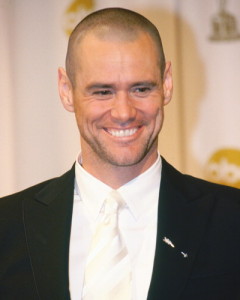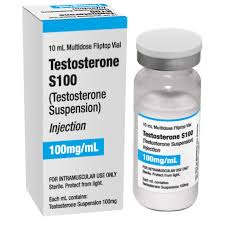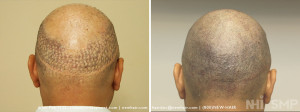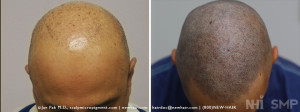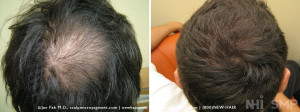I just met with a Asian man with very low density, even for an Asian. He was considering the different harvesting techniques FUE vs strip surgery. He met with other doctors who represented that they could transplant 4000-5000 grafts in a single strip session and 3000 FUEs in a single FUE session. This poor man was confused when I suggested that his yield would be less than 2000 grafts with a strip surgery.
There is a great deal of hype on the Internet that people need to have a single large session of 6,000 grafts to get coverage and that is preferable to 3000 grafts in each of two sessions. I would agree if I did not know better. First let me state my qualifications for what I am about to say. I was the first doctor in the world to do 2000 grafts, then 3000 grafts than 4000 grafts in a single session back in 1992-4 and I have been doing larger sessions longer than anyone in the world starting back in 1992. I was using follicular units in large sessions before most of the doctors heard of the follicular unit, let alone the megasession. That would make me an expert on the subject of large sessions hair transplants and I doubt that anyone would challenge my expertise (see references below from prior to 1995). Add to that the fact that I practically invented the large session of small grafts. You may not know my training in surgery, but I am a board certified general surgeon who did everything from war surgery (in the Vietnam war) to extensive trauma, vascular and cancer surgery. That would make me more than qualified to perform a large session harvesting technique for modern hair transplantation.
Of course, if I could harvest 6000 grafts in a single session safely, I would do it more often. I have always had the supportive staff to carry out this type of surgery. But as safety is my guide in all circumstances, my judgments tell me often that taking out a strip which would yield 12,000 hairs (6,000 grafts) is often dangerous and would put the patient at risk to develop some complication. Please note that I clarified that a 6,000 graft harvest should yield about 12,000 hairs, so if a 6,000 graft harvest yielded substantially less than 12,000 hairs, then I might start thinking that smaller grafts were produced by sub-dividing follicular units which is a sin in my ‘ethical’ book. What makes it a sin is that as the fees are directly related to graft counts, sub-dividing follicular units as a routine accomplish two things (1) it raises the surgeon’s fee, and (2) they damage follicular units which tends to produce decreased hair survival.
A hair is not a hair. Fine hair has low bulk and when someone states that they can completely cover a bald man’s head with 6,000 fine hair grafts referencing a ‘gorilla’ result, they are just plain lying. Dr. Feelgood may market his god-like qualities, but Dr. Feelgood just ‘ain’t’ god.
I get rattled when someone tells me through the various internet forums that I should have given someone 6,000 grafts to manage his bald head and that if it was done by Dr. Feelgood, everyone knows that Dr. Feelgood always achieves high graft counts (no mention of the hair count of course). I would ask two questions, (1) what are the hair counts in such large sessions as a matter of routine, and (2) what do the donor wounds look like as a matter of routine. I know more than most what is possible and what is safe, and I know what is not. I use my judgment to ascertain safety and I really don’t believe for one minute that Dr. Feelgood would get 6,000 grafts (12,000 hairs) when I could only get 3,000 grafts (6,000 hairs), never, never, never. If a graft count in the 5000-6000 range is possible, I do them with the agreement of my patient.
The forum chat ‘folks’ who are not knowledgeable about the subtleties of a safe strip harvest and who believe in the marketing hype of some of the internet doctors can talk from their ‘armchair’ all they want. Either my patients are not typical and have tighter scalps and lower densities than Dr. Feelgood’s patients, or some of the doctors who claim these high numbers routinely are either lying to push up the numbers and claim a ‘mighty’ superman deed rewarded (of course) by making more money, or I am a monkey’s uncle.
Published References from prior to 1995 when almost every hair transplant doctor in the field was doing small sessions of large plugs:
# Rassman, W.R.; Bernstein, R.M. One of our greatest problems – lowballing! Hair Transplant Forum. 2(6); 1992.
# Rassman, W.R.; Pomerantz, M.A. The Art and Science of Minigrafting. International Journal of Aesthetic and Restorative Surgery. 1(1): 27-36; 1993.
# Rassman, W.R. A buyers guide to hair transplantation. Los Angeles, CA: NHI; 1993.
# Rassman, W.R. The minigrafts’ revolution, can we keep up ethically? Publication Journal of Cosmetic Surgery.
# Rassman, W.R. Everything you wanted to know about hair transplantation but were afraid to ask. Los Angeles, CA: NHI; 1993.
# Rassman, W.R. The fast track option: a common sense approach to hair transplantation. Los Angeles, CA: NHI; 1994.
# Rassman, W.R. Megasessions: Dense Packing. Hair Transplant Forum 4(3); 1994
# Rassman, W.R Concern about quality. Hair Transplant Forum 4(4); 1994
# Bernstein, R.M.; Rassman, W.R.; Szaniawski, W.; Halperin, A. Follicular transplantation. International Journal of Aesthetic and Restorative Surgery. 3:119-32; 1995.
# Rassman, W.R.; Carson, S. Micrografting in extensive quantities, the ideal hair restoration procedure. Publication to Journal of Dermatology, Surgery and Oncology, 1995
# Rassman, W.R. Follicular Unit Transplantation Megassessions, Hair Transplant Forum Intl. 5(5); 1995
Tags: megasession, complications



